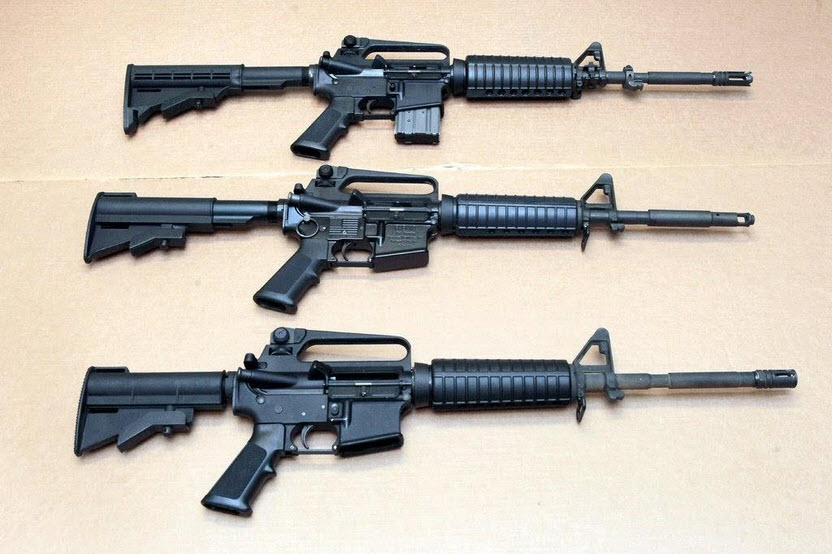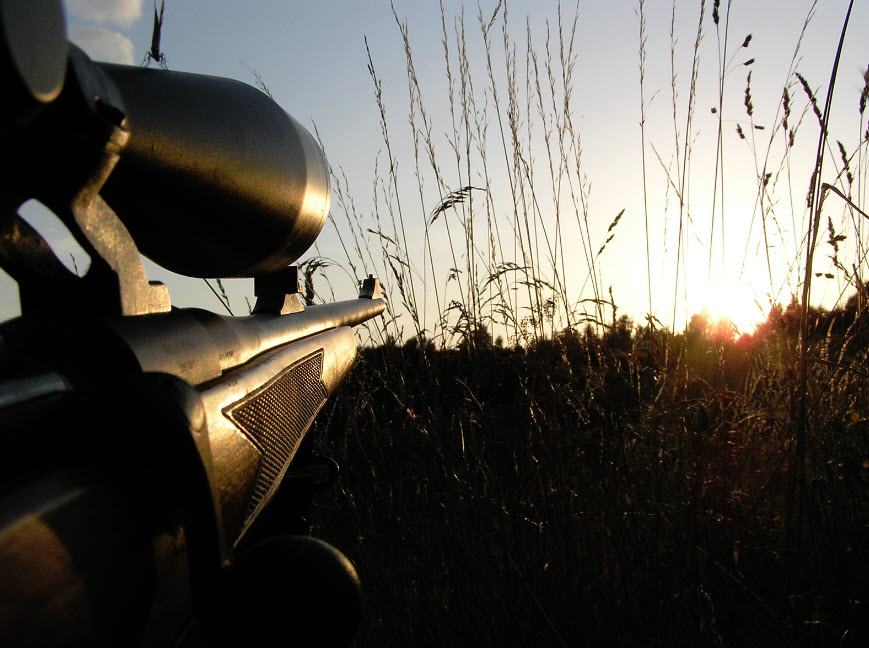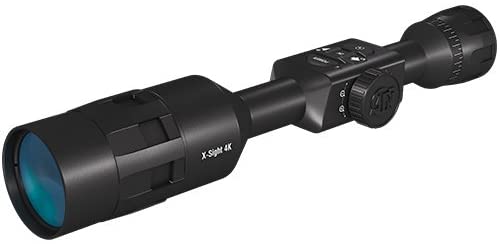
Are you looking for a rifle that is easy to use for hunting or a hobby? Well, the AR-15 is the perfect rifle for you. It is one of the easiest rifles to use. The rifle was initially made for military action and was later converted for civilian operation. To become a perfect shot, you need to perfect your shooting accuracy and handling. Having worked on these factors, you will not only become an excellent shooter, but you can enjoy your hunting escapades.
Below is a guide on how to shoot the AR-15 rifle in the most proficient way.
Page Contents
Origin of the AR-15 Rifle
This rifle was made by a company called Armalite. Its make is traced back to the late 1950s and early 1960s after the Korean War.
The rifle was initially designed as an AR-10, and it’s the same weapon at a higher caliber. The AR-15 is a smaller version of the AR-10 version.
The Firearm Overview
The AR-15 rifle can be broken down into ten parts. These parts include:
- Magazine
The magazine on an AR-15 rifle holds 30 rounds of 5.56×45 mm or 223 Remington ammunition.
- Bolt Release
The bolt release closes the bolt if the bolt is open. If the bolt is open, it exposes the inner gun.
- Trigger
The trigger activates the firing pin that fires the round.
- Safety/select Fire
The select-fire is a switch that takes the firing mode from safe to fire.
- Sights/ Optics
The sight is the reticle device that is used for aiming the rifle.
- Charging Handle
This is the handle that loads and ejects a round from a magazine once pulled.
- Stock
The stock is the back portion of the gun, and it provides support when shooting.
- Handguard and Rails
The hand guard hides the barrels where you hold the weapon with your front hands, and the rails create room for attachments.
- Upper Receiver
The upper receiver contains the ejection port and the bolt that contains the firing operations.
- Magazine Release
This is the button that releases the magazine from the weapon.
- Attachments: Mounting a rifle sling in AR-15 is pretty easy. You can use the sling attachments or clips to mount them.

How to Shoot the AR-15 Effectively
To shoot an AR-15 efficiently, you need to learn some techniques to increase your accuracy. These techniques include:
- Proper Holding
There are four different positions you can hold your rifle when firing your AR-15. In the different positions, ensure that the way you grip and hold your rifle remains the same.
When you have set your position, put your firing hand on the pistol grip, then put your thumb over the grip’s three fingers. The thumb should be wrapping around the three fingers. This way, you will have a firm grip on your rifle so avoiding any unnecessary movements. For the non-firing hand, wrap it around the hand guard, so your fingers twist around the fore-end.
After this, ensure the back of your rifle stock is against your body. The stock should be placed on your shoulder pocket. This position helps improve your accuracy and allows fast recovery after firing. Then, place your cheek over the stock’s comb. This is called the Cheek weld.
- Understand your positions

There are four positions you can use when firing a rifle. The positions include kneeling, sitting, standing, and prone position. The standing position is the best when you are shooting and still being mobile. When you want to maintain a low profile, then use the sitting and kneeling position. Lastly, if you want to maintain optimum stability at the lowest point, the prone position is the best bet. To enhance accuracy, you need to ensure a comfortable firing position in all your circumstances.
- Use of the Rifle Sights
In any rifle, using the rifle sights will help improve the accuracy of your shooting. The main sighting system of the AR-15 is the rifle iron sights. There are different forms of iron sight; they include front sight block and fixed rear sight.
The front sight has two “ears,” the nestle and the adjustable post. The rear sight, on the other hand, comes with two apertures. The large aperture and the small aperture. After you have secured your position, grip, stance, and cheek weld, you can now focus on your sights. Focus on the rear aperture. Then center the top portion of the front sight on your target.
- Controlling Your Breath
Although most action involves using your hands, fingers, and eyes, breathing is also a crucial part of the firing. Controlling your breath is important since your sights always move anytime you inhale or exhale.
You need to learn to fire on empty lungs to maintain your firing accuracy. To do this, focus your sights on your targets while breathing normally. When you inhale, you will see your sights moving; you need not worry since your sights will return to their normal position when you exhale. So you will squeeze the trigger on empty lungs. However, you need to ensure that you don’t hold your breath for long periods since it may deviate from your aim.
- Trigger Touch
How you pull your trigger will also affect your aiming. Pulling the trigger looks like the simplest step in shooting, and so most people overlook this step. While pulling the trigger, the thumb secures the right grip, and you are required to move the trigger finger only. After squeezing the trigger, maintain a firm grip during the firing motion and keep your position steady.
- Upgrades
Lastly, you should consider some nice upgrades to ensure your rifle works perfectly. You can add an AR-15 muzzle brake. To improve your accuracy, you also need to upgrade the optic since it gives a 20/20 vision. If you are into hunting, you can choose the red dots and compact prism scopes. They will help you focus and zero on your target.
Conclusion
To become an excellent shooter, you need to be ready to learn and patient. You also need to understand every aspect of your rifle. The scope of your work will also determine how much learning you need. A person who needs a rifle for military purposes will need to take more classes than a person who needs a rifle for hunting. When dealing with an A-15 rifle, you need to learn the rifle parts and use them efficiently.
Why consider using an AR-15 for hunting?
As more and more casual shooters have begun to use AR-15 rifles, dedicated hunters wondered if they would be a good fit for hunting. The AR-15 rifles have both benefits and downsides when it comes to being used for hunting, so keep reading to find out more.
The details below also apply to semiautomatic rifles, like the Sig Sauer MCX and the AK47. We want to remind you that you can buy or build an AR platform in most hunting cartridges.
We want to focus on AR-15’s functionality which slowly became the no-1 hunting firearm in the United States.

Semi-auto fire
It’s the most significant and easier to notice the benefit when using an AR-15 as it surpasses other kinds of the bolt, pump-, or lever-action rifles. Semi-auto systems come with their own set of challenges, but the ability to quickly pull the trigger several times is a crucial benefit in some hunting scenarios. Varmint hunters couldn’t agree more.
Many deer hunters claim they only need one shot to kill their game, but exceptions exist. If you’ve been hunting long enough, the chances are they you have misfired several times in your life. The AR-15 gives you the possibility to make a second shot in a blink of an eye, so you don’t get back to the camp empty-handed.
Weight and ease of use
AR-15 typically weighs less than bolt-action rifles, and you can use the same gun in different sizes thanks to the adjustable stock. These are excellent features for entry-level hunters who might get intimidated about using a rifle that doesn’t ensure a perfect fit or is too heavy to carry for miles.
We are aware that the AR-15 profile presents more sharp edges and even snag spots than the regular deer rifle. At the same time, the 5- and 10- round magazines will streamline the profile. The grip might catch on a vine or branch any now and then. However, that risk is relatively low and the effect is minor. The type of control and maneuverability you get outweigh the downsides on any given day.
Modularity and customizability
Some shooters compare the AR-15 to Legos, and for the perfect reason. The rifle system is highly customizable and you don’t even need to be a professional gunsmith to do it. From stock to the trigger to the handguard, you can basically customize everything on an AR-15 to accommodate your applications and specific needs.
For instance, a single lower receiver can take various upper receivers featuring barrels chambers in multiple calibers. As a hunter, an upper chambered in .223 Rem. It is excellent when hunting prairie dogs or another varmint. Should you go for whitetails or hogs, you will need o upgrade to an upper chambered in .300 Blackout. If you fancy a mountain hunt, stand hunting, or long-range, you can build a lightweight rifle on your own.
When it comes to customization, triggers represent another element to consider. Aftermarket triggers for bolt-action rifles can be pricey and even tricky to install. However, you will find AR triggers reasonably priced, and installation won’t be complicated either.
Are there any downsides?
Nothing is perfect and AR-15 doesn’t make an exception. We recommend you go over the downsides to make an informed decision when buying the parts for your AR-15. They’re not deal-breakers for most hunters, but it’s wise to get the whole picture.
Reliability
The risk of malfunctioning semi-auto action is higher than with the simple action models. It’s a disadvantage that you can control using the proper ammunition, take good care of the rifle and practice as much as possible. Even so, the risk for AR-15 malfunctioning is never null, and it can take many forms: failure to extract, failure to feed, to double feed, etc.
If you encounter difficulties loading the round into a bolt-action rifle, you can still slide round in the chamber before pulling the trigger. However, if your AR-15 gets jammed when hunting, you might need to take some time out from hunting to get it back in the game.
Looks
When you look for hunting gear, looks are almost never necessary. For whatever reason, some hunters feel that the AR-15 doesn’t fit in the hunting picture, especially when hunting deer. It’s not common for a hunter to carry a polymer and black semiautomatic rifle. Most will expect hunters to take bolt-action, wood-stock rifles, or a polymer stock painted in flat dark earth or camo.
Regardless of the downsides, the number of hunters turning to AR-15 is rising. All things considered, there’s always the category of hunters who don’t want to let go of the wood-stock rifles when hunting whitetail.
Let’s sum it all up!
One of the downsides worth mentioning about the AR-15 is the possibility for the detachable magazine to fall out while hunting. Reduced coil and the opportunity to easily install suppressors, optics, and other accessories are other benefits to mention.
Don’t mind the myths that AR-15s are less precise when hunting or that they’re pricier than hunting rifles. Nowadays, it’s really affordable to buy or build your AR-15 that shoots better than expected. The price range for AR-15s is vast and you can find both cheap and expensive options.
You’re not the only hunter thinking about using an AR-15 when deer hunting. Back in 2014, 27% of hunters used the AR-15 for hunting.
What can you hunt with an AR-15?
We start by reminding you that some states don’t allow hunting with an AR-15 at all, while others have strict limitations about using them. Either way, you might have to set the rifle to fire larger rounds. Since Ar-15s are modular, it’s not difficult to switch elements with tools and get the hunting rifles you need ins just one rifle. A bolt carrier group, new barrels, and compatible magazines are enough to help you make the AR-15 rifle that you can use to hunt as follow:
- .300 Blackout- you can successfully use it for hunting animals such as deer, varmint, and feral hogs
- .223 It’s excellent to hunt small game like rabbits, coyotes, critters, and foxes
- .308 These strong rounds are helpful in hunting elk, moose, hogs, deer, and black bears
- 6.5 Grendel -These rounds will generate low recoil and are excellent when hunting deer-sized animals.
Faqs
How long does the AR-15 last?
An AR-15 barrel will last around 20,000 rounds. Let’s say you to the range once and fire 100 rounds through the rifle every season. All in all, it will take around 16 years to wear out the barrel of the AR-15.
What caliber is the AR-15?
The AR-15 is chambered in .223/5.56mm NATO, but there are many other options in various calibers. 7.62x39mm, .22-LR, 9x19mm Parabellum and shotgun calibers are also available.
How many parts does an AR-15 consist of?
You will need 31parts to put together an AR-15, and the primary name is bolt catch, the trigger, pivot, springs, selector switch, takedown pins, and hammer. The most efficient way to get all the parts is to buy a complete AR-15 lower parts kit.
Is it possible to use AR 15 for hunting?
In most states, it’s legal to use AR15 for hunting. These rifles bring to the table numerous benefits for hunting, no matter if you hunt deer or small game during the off-season.
Why do people name the AR-15 an assault rifle?
AR-15 style semiautomatic weapons are the civilian option of military weapons. The difference between civilian and military weapons is minor, and both are made to kill persons/animals in large numbers.






